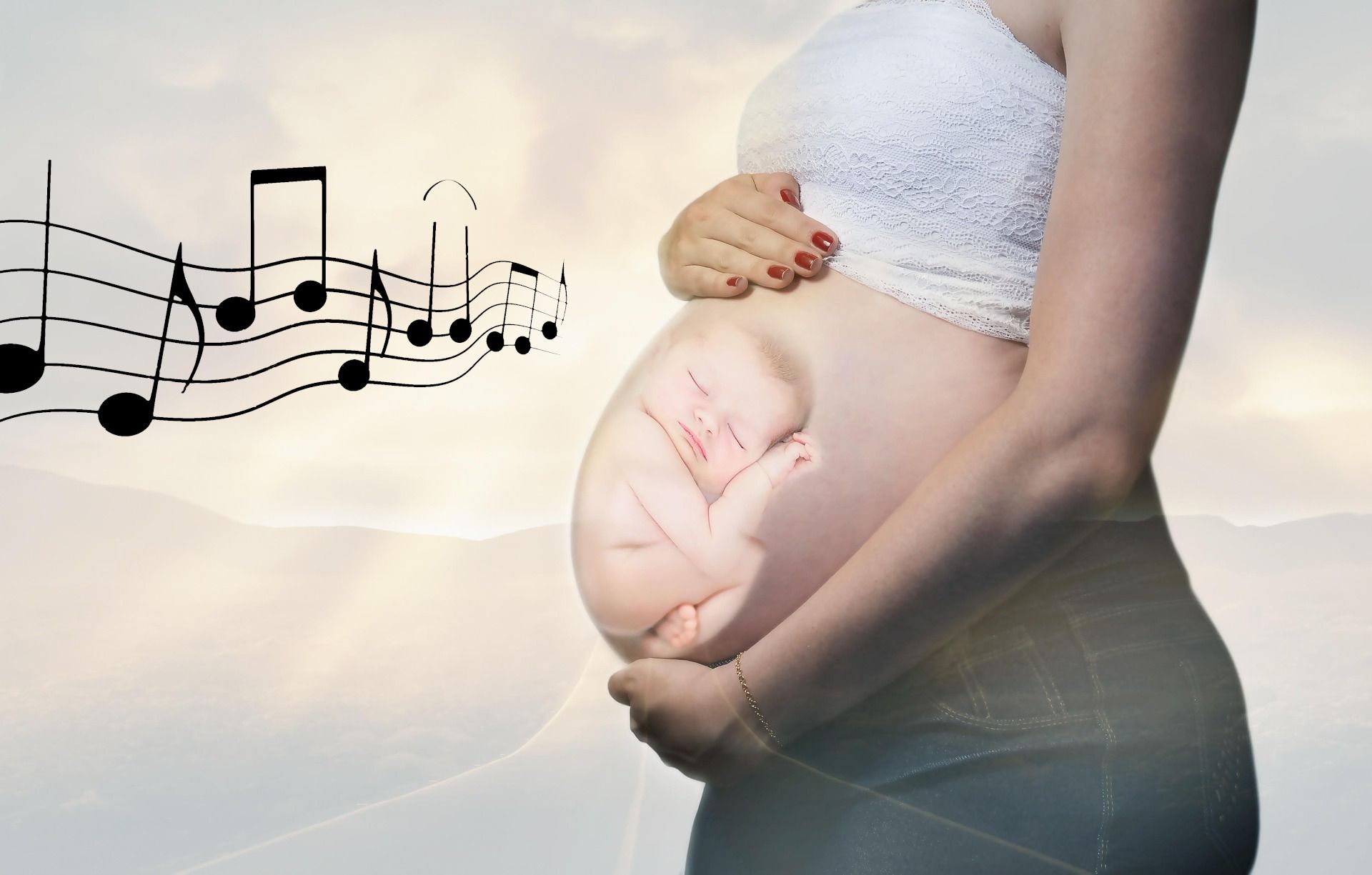The "Mozart Effect" Misconception
The idea that listening to Mozart makes babies smarter stems from a 1993 study on college students—not fetuses—which showed a temporary boost in spatial reasoning. The effect lasted only 10–15 minutes and wasn’t linked to overall intelligence.
Fetal Hearing Development
By 23 weeks, fetuses can hear low-frequency sounds (e.g., mom’s heartbeat, voice) and respond with changes in movement and heart rate. Their auditory system is fully connected to the brain by 16 weeks.
Music as a Multi-Sensory Experience
Babies in the womb don’t just hear music—they feel vibrations, resonance, and maternal physiological responses (e.g., breath, heartbeat variability). This stimulates brain areas like the amygdala and hippocampus.
The Power of Maternal Singing A
mother’s live singing (vs. recorded music) creates unique vibrations and breath patterns that calm both her and the baby. Humming or playing an instrument also produces resonant effects the fetus perceives.
Memory and Music: A Lifelong Imprint
Newborns recognize and prefer music or voices they heard in the womb. Anecdotes include a cellist instinctively knowing a Bach piece her mother played while pregnant with her.
Music and Stress Reduction
Music lowers maternal stress and anxiety, which directly benefits fetal development. Chronic stress in pregnancy is linked to negative outcomes, while calming music (e.g., live, varied rhythms) counters this.
The Problem with Modern Music Production
Today’s digitized music (quantized beats, auto-tune, sampled tracks) lacks the natural variability of live performance—critical for fetal neurological development. Older analog recordings had more dynamic range and pitch fluctuations.
Heart Rate Variability and Music
Both mothers and fetuses experience co-regulation of heart rates when listening to music, especially live or emotionally engaging pieces. This synchronization supports fetal nervous system development.
The Role of Pitch (432 Hz vs. 440 Hz)
Some argue that music tuned to 432 Hz (vs. the standard 440 Hz) is more "natural" or relaxing, though evidence is mixed. Historical pitch standards varied widely (e.g., Baroque music often played at 415 Hz).
Loud Noise Risks
Prolonged exposure to sounds above 90 decibels (e.g., loud workplaces, concerts) can stress the fetus, disrupt sleep, and trigger physiological stress responses.
The "Universal Lullabies" Decline
Michel Odent (obstetrician) noted that communal singing (e.g., pregnant women, midwives, and families singing together) has vanished, replaced by passive listening to recorded music—a loss for fetal sensory stimulation.
Musicians’ Unique Physiological Responses
Musicians’ heart rates sync with the tempo of the music they play, and their motor movements (e.g., finger dexterity) entrain with cardiac cycles. This "embodied" music-making may have parallels in fetal development.
Baroque Music’s Lower Pitch
Baroque-era instruments (e.g., flutes) were tuned lower (e.g., 415 Hz) than modern standards, creating a warmer, more resonant sound that some find inherently calming.
The "Beat Detective" Effect
Modern music production tools (e.g., "beat detective" software) eliminate natural rhythmic variations, creating mechanically precise beats—unlike the irregular, "alive" rhythms of live music or classical waltzes.
Music as a Bonding Tool
Parents who play music to their unborn babies often engage in more nurturing behaviors post-birth, contributing to better developmental outcomes—but this is more about parenting style than the music itself.

